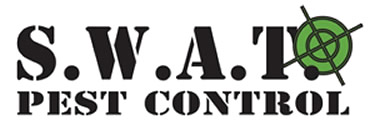Cockroach Control
For effective, lasting results in cockroach control, call SWAT Pest Control.
We have the local expertise and knowledge to achieve the results you expect, and we are right on your doorstep!
Known health risks associated with cockroaches
Very few people enjoy the sight of a cockroach in their home or workplace, especially when they know they carry disease and pose health risks.
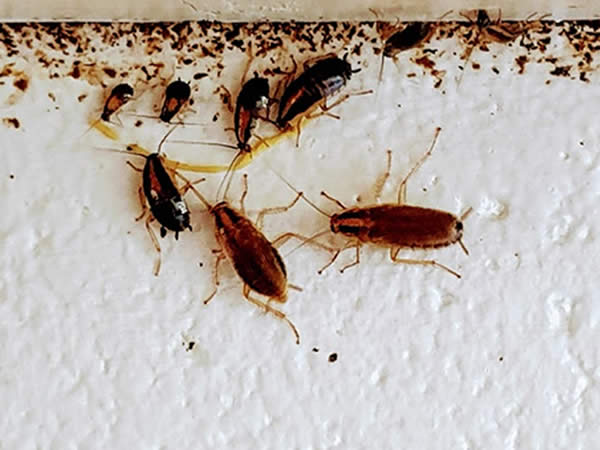
- Diarrhoea
- Dysentery
- Poliomyelitis
- Rashes
- Salmonella
- Increased risks of eczema
- Increased risks of childhood asthma
Cockroaches are nocturnal insects who search for food around your premises, going through your rubbish, cupboards, kitchens and drains. Their preference is to remain hidden in small spaces during the day. Spotting cockroaches on a regular basis usually means numbers are rising due to their high intensity breeding.
Types of cockroach in New Zealand
In New Zealand, we have a number of species of cockroach. We have the Gisborne and the Native Bush cockroach who prefer to live outside in the bush, however, will stray inside when it is wet or temperatures are too hot outside.
The Gisborne cockroach can be told apart from the native bush cockroach by its more distinctive white bands and larger body, which measures up to 45 millimetres long and 12–15 millimetres wide. It has very prominent hind legs and its flattened body can squeeze through gaps less than two millimetres high. Both these cockroaches can be treated with a spray treatment.
GERMAN COCKROACH
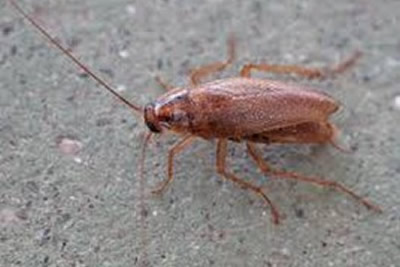
German cockroaches prefer living indoors and find their way in through old furniture and boxes or electronic devices. They prefer warm, moist environments and leave peppery faecal matter on counter-tops, shelves and cupboard doors; particularly around hinges. It can also be found in corners of rooms or along door openings. You may notice a musty odour, which is a sign of an infestation. Identifying features include:
- Light brown in colour
- Two black stripes behind the head on the pronotum
- Grow to 15mm in length
- Lay up to 40 eggs at a time, 3-4 times a year
AMERICAN COCKROACH
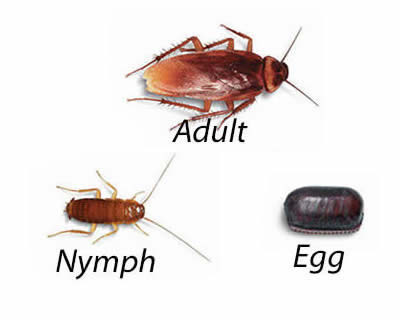
American cockroaches generally live outside, they are commonly found in drainage systems and prefer warm, damp environments. Unfortunately however, they do make their way indoors for food and water; they can pass under doorways if not sealed correctly, and garages are frequently known to be high entry points. American cockroaches tend to gather together in open spaces unlike the German cockroaches who hide in crevices. Identifying features include:
- Brown – reddish in colour
- Adult American cockroaches have a yellow band outlining behind their head
- Grow to 40mm in length
- Lay up to 16 eggs at a time
- Faecal material are blunt at the ends and are ridged on the sides, often times mistaken for mouse droppings
Gisborne Cockroach
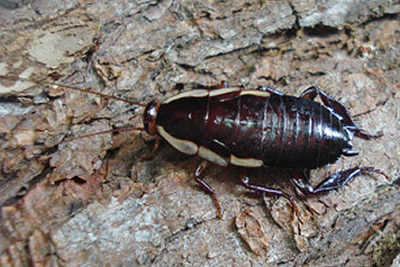
It is harmless—unlike German or American cockroaches, it does not spread disease, nor can it fly. It typically doesn't invade food supplies, unless they're decaying. It prefers to stay outside under bark or wood chips, however will come inside if it's wet or too hot.
Bush Cockroach
The New Zealand Bush cockroach is small, flat and oval in shape and lives predominantly in gardens and bush areas seeking harbourage under bark and leaf matter. They will occasionally make their way into our homes making their solitary journey across our wall. Like the Gisborne cockroach it is harmless to humans, however generally an unwelcome guest!
Cockroach Control Tips
Quick and effective measures to help reduce your cockroach population
- Keep food sources safely sealed and contained
- Keep benches, walls and floors surfaces clean in food preparation areas
- Clean up spills that are a potential food source
- Cockroaches can be transported onto your premises via cardboard boxes, furniture, laundry, egg crates, used fridges etc. so ensure you check them over before bringing them in
- Regular rubbish removal
- Remove any unnecessary clutter like product packaging, boxes, that provide safe harbourage for cockroaches
While preventative efforts are helpful, if you are already seeing cockroaches, you have an issue. Some things to consider are:
- Cockroaches are resilient insects, low intensity repellents and sprays will not treat the problem
- Some species of cockroaches require a baiting programme to manage their control
- Cockroaches have a small appetite, so the bait needs to be their first food source, therefore minimising other food sources is critical
Due to cockroaches nocturnal nature and their desire to remain out of sight, it can be difficult to tell you have a cockroach infestation until numbers build and multiple sightings are a regular occurrence.
Signs you have a cockroach infestation:
Due to cockroach's nocturnal nature and their desire to remain out of sight, it can be difficult to tell you have a cockroach infestation until numbers build and multiple sightings are a regular occurrence.
- Cockroach droppings
- Cockroach shedding's
- Unpleasant musty smell
- Packages and surfaces that have small nibble marks or holes
